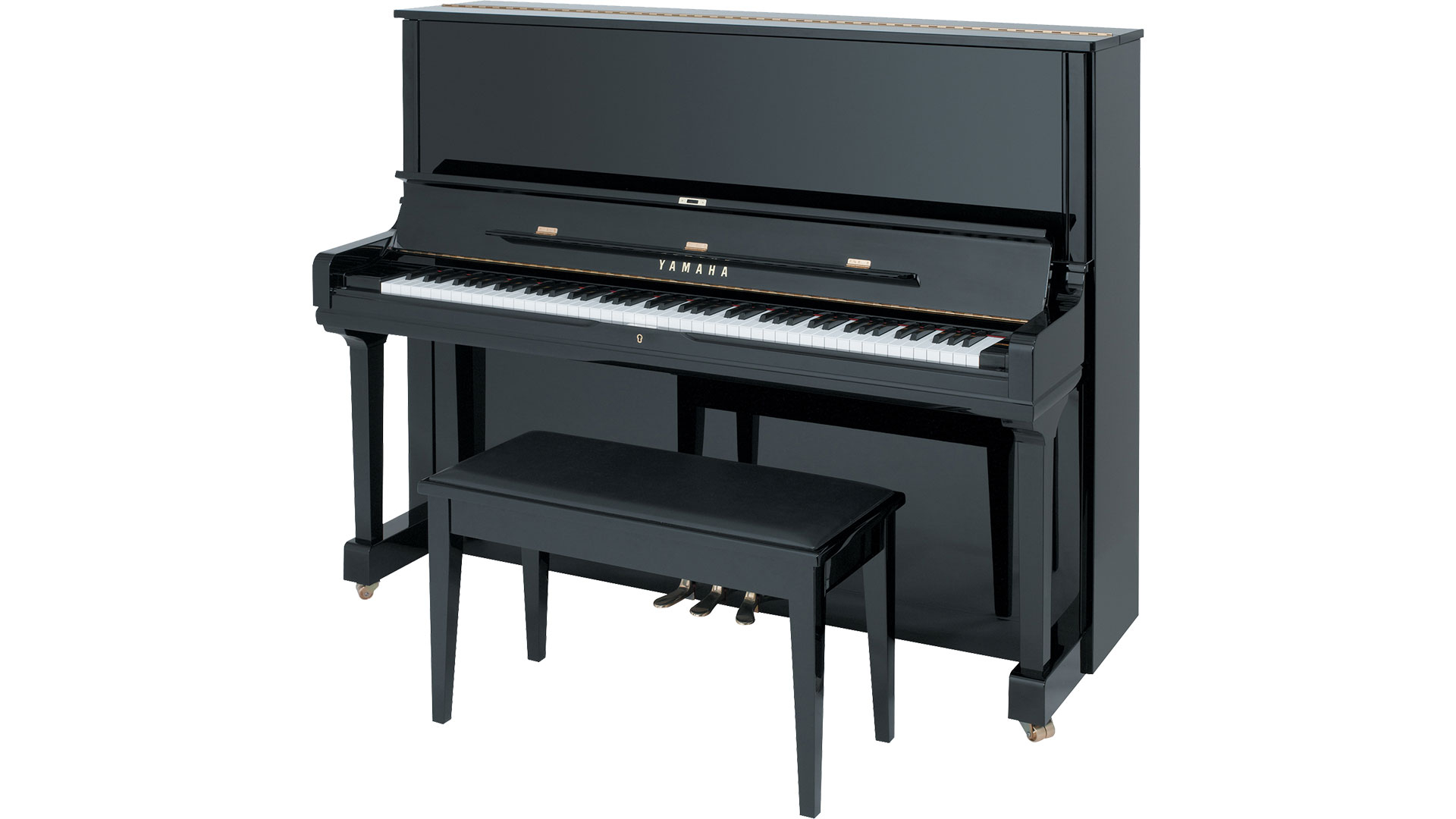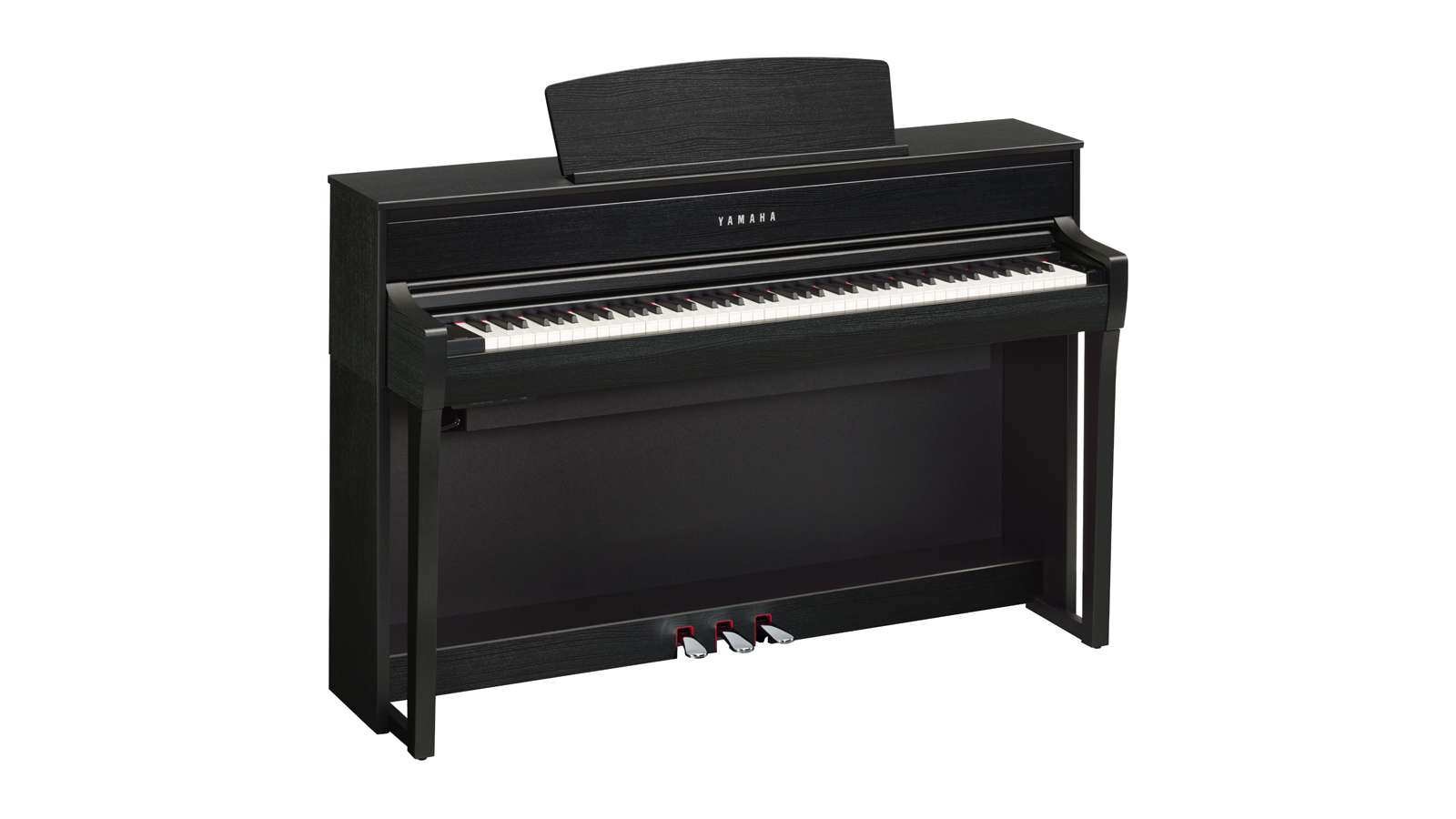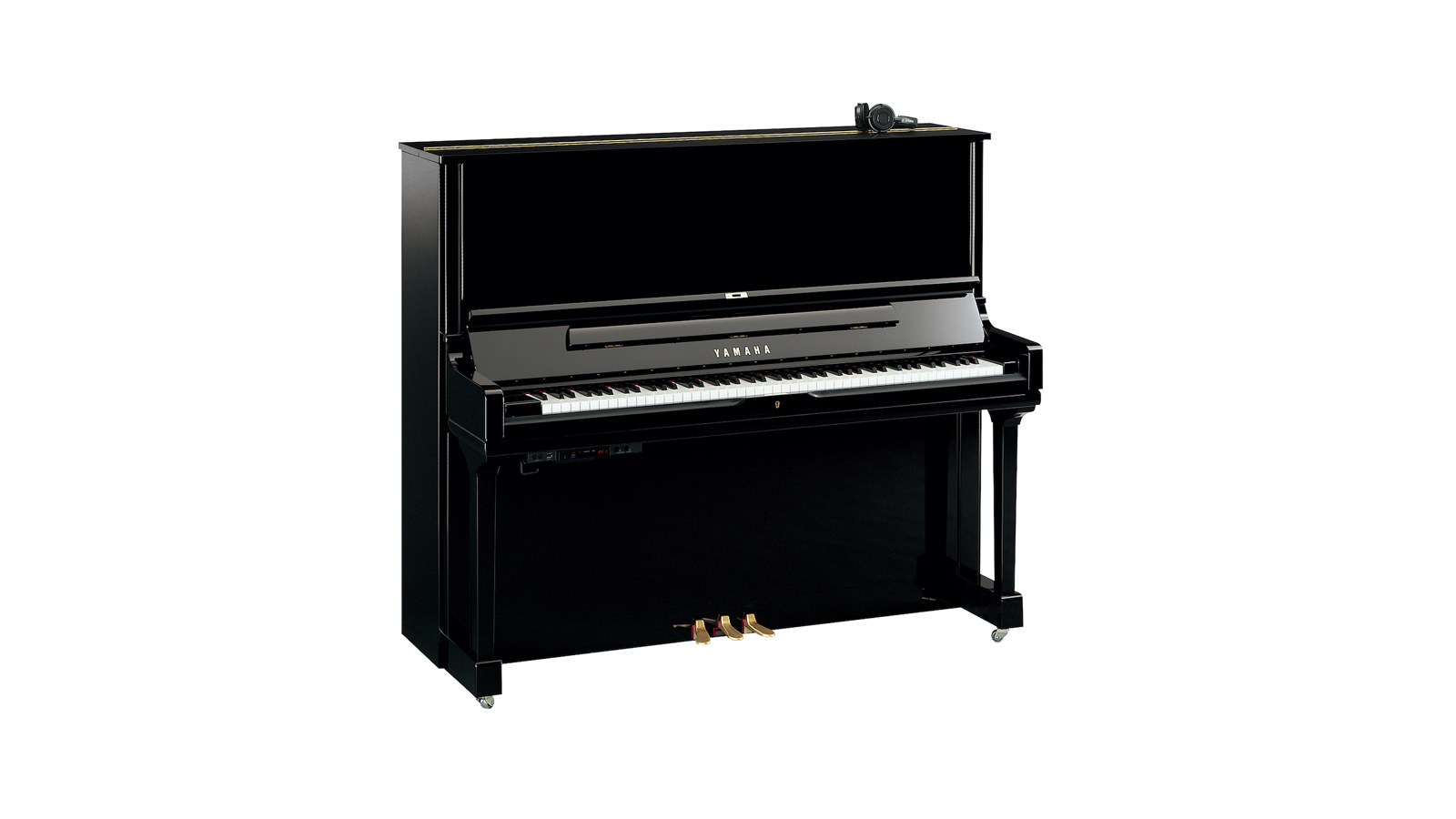MusicRadar Verdict
A brilliantly versatile instrument of the highest quality, the YUS3 SH2 is certainly one of the finest uprights we've played, if not one of the finest pianos. With a beautifully playable action, fantastically rich and expressive acoustic tone and the undeniable convenience of SILENT mode, the YUS3 SH2 is a pianistic colossus with one foot firmly planted in each of the acoustic and digital domains.
Pros
- +
Beautiful acoustic tone
- +
Superbly playable
- +
SILENT mode
Cons
- -
Expensive
- -
It may be too large for some homes
MusicRadar's got your back
Yamaha YUS3 SH2 review: What is it?
If ever an instrument was to personify the phrase 'best of both worlds', a Yamaha SILENT piano would be a strong candidate for the position. Marrying all the merits of a traditional acoustic piano with advanced digital piano technology, the system allows you to both play an acoustic piano as normal, or switch off the acoustic part of the instrument altogether and play 'silently' through headphones. It does this by deploying a mechanism so that when SILENT mode is engaged, the hammers no longer hit the strings. Instead, a row of optical sensors captures the movements of your playing and relays the information to a digital sound module, loaded with high-definition samples of Yamaha's flagship CFX concert grand and a Bosendorfer Imperial grand piano, plus a few other sounds.
Yamaha supplies this system as a factory build option on most of its acoustic piano lines, from the entry-level, £5,000 b1 upright (reviewed here) right up to the £49,000 C7X grand piano, but the focus of this review is the YUS3-SH2 model. This is the silenced version of the midrange model in Yamaha's YUS range, a step up from the company's popular and more affordable U series of premium uprights. Of the three pianos in the range, the smaller YUS1 is more or less the same piano in a slightly shorter cabinet, while the YUS5 is the same size as the YUS3 but features upgraded materials for the keys (Ivorite instead of acrylic resin), an innovative pull-out music desk and a proper sostenuto pedal, rather than the central silencing pedal found on the other two pianos in the range.
Yamaha YUS3 SH2 review: Performance & verdict

Aside from the obvious bonus of the SILENT system and all the convenience, this brings to the table, the YUS3 SH2 is, first and foremost, an acoustic piano, and one that, in this price bracket, you'd expect to be of peerless quality. Made in Hamamatsu, Japan, in the same factory that produces the £140,000 CFX Concert Grand, the YUS3 is an imposing instrument to sit at. Reaching an overall height of 131cm, it has a very stately presence and a mirror-smooth, polished ebony sheen. With its traditional European styling, opening lid and soft-close, lockable fallboard, it oozes quality before you even touch the keys.
Over 8000 parts go into the making of an upright piano, and in the case of the YUS3, you're getting the same materials that are used for the components in the CFX. These materials have been meticulously sourced for the specific way in which they influence the quality of the sound. That means a cabinet constructed from expensive European spruce, renowned for the rich, warm acoustic tone that it produces, together with premium mahogany for the hammers.
The YUS3 also uses the same German strings as the CFX, rather than the standard Japanese strings fitted to the U series. It's not just the exceptional end result but also the time spent sourcing these materials, plus extra time spent on voicing and registration of the piano at the factory by Yamaha's master technicians, that accounts for a good proportion of the cost of this piano. It seems that, in this case, you really do get what you pay for, and you pay for what you get.
Module behaviour

The SH2 portion of the model designation refers to the name of the digital module fitted to the piano at the factory, just one of several models of module that Yamaha supplies for the SILENT pianos, which in this case, offers 20 internal sounds. Slung discreetly beneath the front left edge of the keyboard, the SH2 unit can catch your knees unawares if you're not careful. This is where you plug in your headphones - a pair of which come with the piano, by the way - and switch the current sound using the rotary dial. There's a rudimentary red LED display to help you keep track of things.
SILENT mode is activated by pressing the centre pedal and pushing it to the left, which positions a stopper rail in front of the hammer shanks. While this prevents the hammers from striking the strings, it retains most of their movement as you play, so the feel of the keys is largely unaffected with SILENT mode engaged. There is some inevitable thunking from the keys but very little else to disturb the peace of your surroundings.

Yamaha Clavinova CLP-775: Looking to go purely digital? Well, you'll want to check out the stunning Yamaha Clavinova CLP-775. This piano offers stellar sounds, outstanding playability and unbeatable build quality - that's why it's our top pick for the best digital piano on the market.
Kawai K-300: The exquisite Kawai K-300 is one of the UK's best-selling pianos, and it's easy to see why. Coming in at 122cm in height, it's a great option for smaller spaces and it can even be ordered with Kawai's Silent ATX-4 system.
With the headphones on, the onboard CFX grand piano voice is nothing short of fantastic - there are reportedly in excess of 2 million samples in each of the CFX and Bosendorfer voices - and there's the full-fat version of Yamaha's excellent VRM (Virtual Resonance Modelling) in effect here as well, replicating the complex interplay between the soundboard, strings and cabinet that occurs when the damper pedal is held down.
As well as functioning normally while in acoustic mode, the damper pedal is fitted with a continuous detection sensor for use in SILENT mode, delivering an equivalent degree of responsiveness when playing the sampled piano sounds. In order to produce the most natural piano sound possible while playing with headphones, Yamaha has used what they call CFX Binaural Sampling to record the samples, using a microphone rig that corresponds to human ear positions. This results in an involving and immersive sound that does a very convincing job of making you think that you're playing the piano acoustically.
The SH2's other onboard sounds are more than serviceable - the Bosendorfer has a rounder, mellower tone than the CFX, making it great for romantic classics or jazz and blues, and the harpsichord tones are brilliant if baroque is your bag, with superb key-off samples and a crisp yet luxuriant, fuzziness.
The SH2 module is also compatible with Yamaha's free Smart Pianist app, allowing easier control of the module's internal settings over Bluetooth, plus 20 voice demo songs and 50 onboard classic pieces, all via a connected mobile device. Aside from the 20 onboard presets, which include strings, organ and vibraphone sounds, there are also 480 XG Voices and 12 Drum / FX kits available, but these seem to be limited solely to internal song playback. It's a bit of a shame that these can't be accessed from the keyboard in addition to the onboard presets.
Yamaha YUS3 SH2 review: Hands-on demos
Rimmers Music
DW Music
Yamaha YUS3 SH2 review: Specifications
- Keys: 88
- Dimensions (W x D x H. mm): 1520 x 650 x 1310
- Weight (kg): 257
- Connectivity: 2 x 3.5mm stereo headphone outputs, MIDI IN/OUT, AUX IN Stereo mini jack, AUX Out 2 x 6.3mm output, USB to Host, USB to Device
- Polyphony (Silent Mode): 256
- Bluetooth Audio: Dependent on the territory
- Contact: Yamaha
Dave has been making music with computers since 1988 and his engineering, programming and keyboard-playing has featured on recordings by artists including George Michael, Kylie and Gary Barlow. A music technology writer since 2007, he’s Computer Music’s long-serving songwriting and music theory columnist, iCreate magazine’s resident Logic Pro expert and a regular contributor to MusicRadar and Attack Magazine. He also lectures on synthesis at Leeds Conservatoire of Music and is the author of Avid Pro Tools Basics.
““We were arguing a lot and we were miserable”: How Green Day exceeded expectations with their most ambitious song
"There’s plenty for us guitarists to learn – and ‘less is more’ is the overriding lesson": how to play like George Harrison on The Beatles' Abbey Road
“They didn’t like Prince’s bikini underwear”: Prince’s support sets for the The Rolling Stones in 1981 are remembered as disastrous, but guitarist Dez Dickerson says that the the crowd reaction wasn’t as bad as people think











